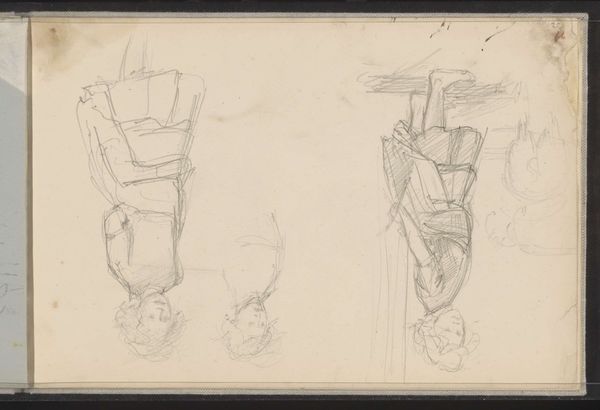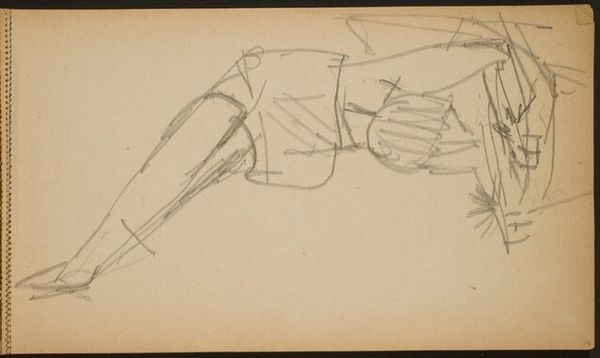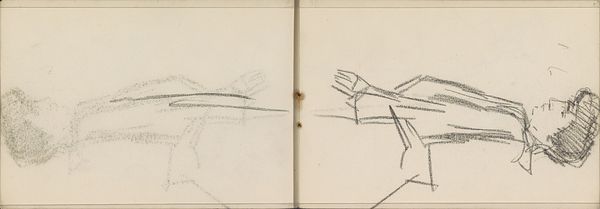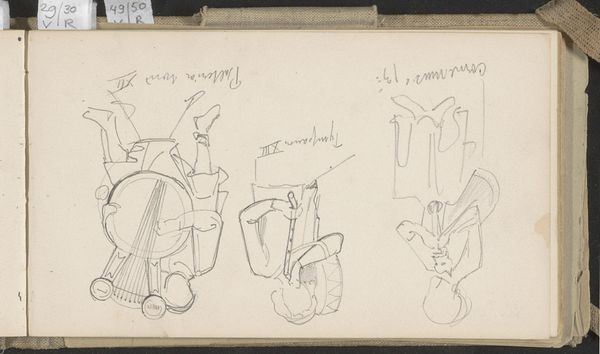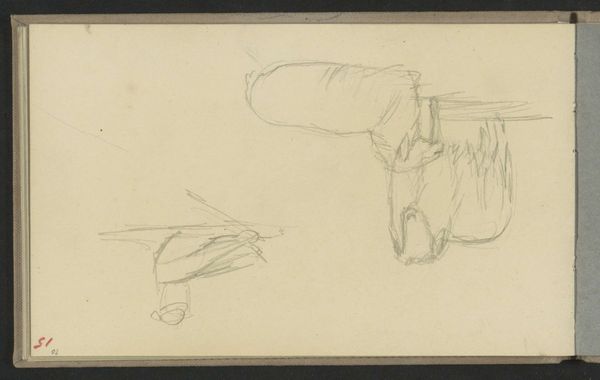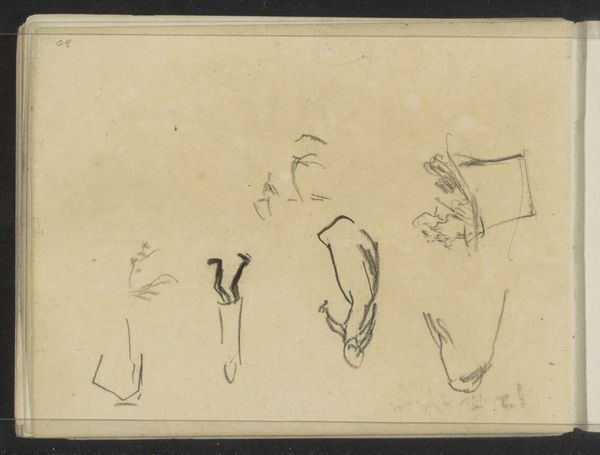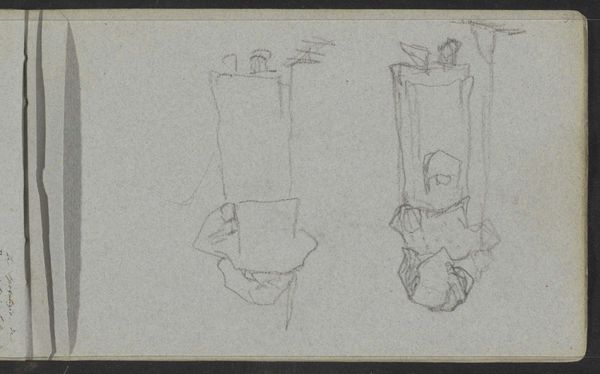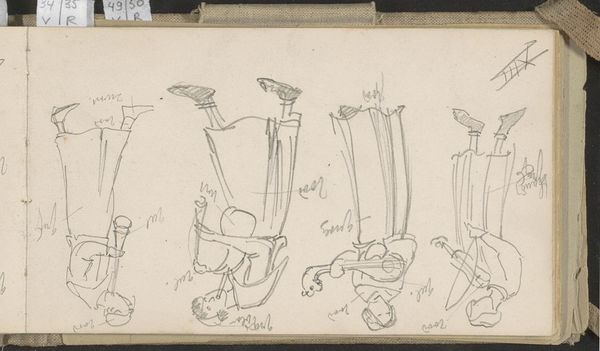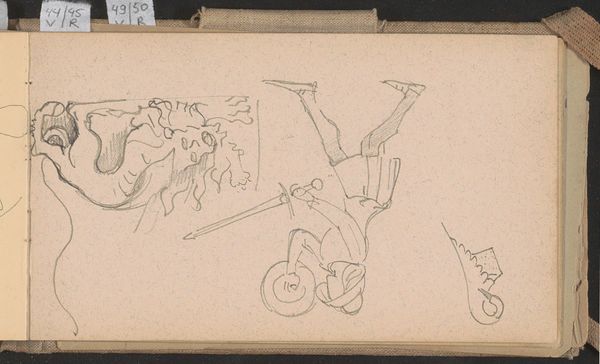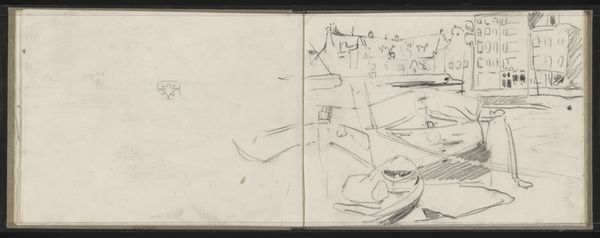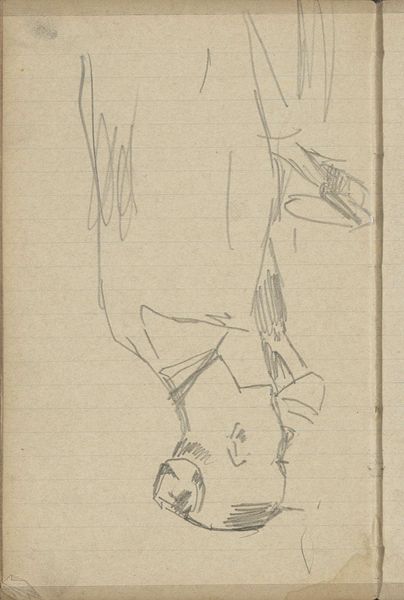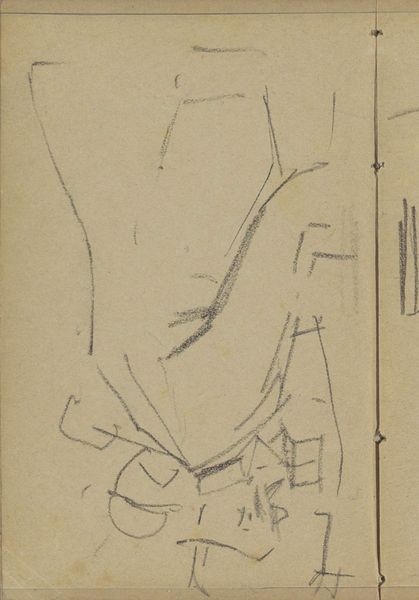
drawing, paper, pencil
#
portrait
#
drawing
#
imaginative character sketch
#
toned paper
#
art-nouveau
#
quirky sketch
#
sketch book
#
figuration
#
paper
#
personal sketchbook
#
idea generation sketch
#
sketchwork
#
sketch
#
pencil
#
sketchbook drawing
#
storyboard and sketchbook work
#
sketchbook art
Copyright: Rijks Museum: Open Domain
Editor: We're looking at "Kneeling Young Women in Prayer" by Antoon Derkinderen, made sometime between 1892 and 1901. It’s a pencil drawing on paper. What immediately strikes me is the sketch-like quality; it feels like we’re looking directly into the artist's process. What do you see in this piece? Curator: I see echoes of medieval iconography blended with a burgeoning Art Nouveau aesthetic. The kneeling figures, with their formalized gestures, harken back to devotional imagery, where posture and adornment were freighted with symbolic meaning. Editor: Can you elaborate on the symbolic meaning? Curator: Certainly. The act of kneeling, of course, represents supplication and humility. But consider the crown and the fleur-de-lis-like symbols adorning their garments. They indicate nobility, suggesting these figures embody both earthly power and spiritual devotion. Do you think the artist intentionally juxtaposed these ideas? Editor: That's interesting. I hadn’t considered the contrast between power and humility. The tentative lines of the sketch make me think this was maybe a preliminary study for a larger work, and that Derkinderen was trying to capture how cultural ideas play into posture. Curator: Precisely. And the very incompleteness of the sketch is revealing, almost as if the artist is inviting us to contemplate the essence of these symbols, stripped bare of their usual ornamentation. Editor: I hadn't thought of it that way. It's like the artist is showing us the building blocks of meaning. Curator: Exactly! This image isn’t just about devotion. It speaks to our ingrained cultural memory around religious iconography, how such imagery is often translated by us now in popular culture as fantasy, and also to our shared language of symbols, which continue to influence how we understand ourselves. Editor: That's given me a whole new perspective on the artwork, seeing beyond just a simple sketch.
Comments
No comments
Be the first to comment and join the conversation on the ultimate creative platform.

